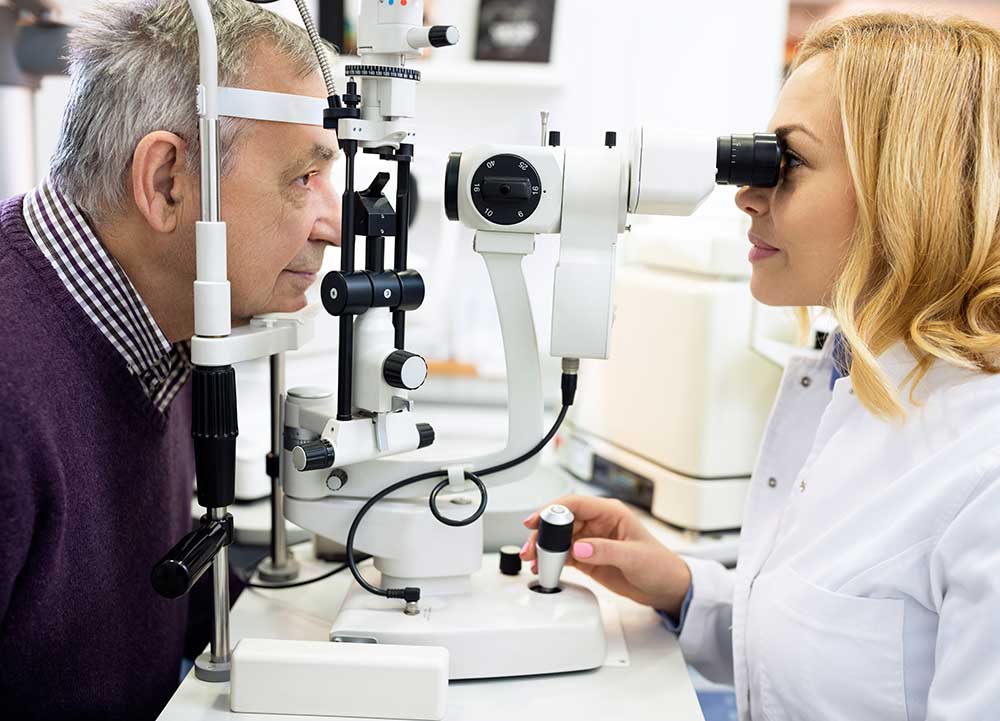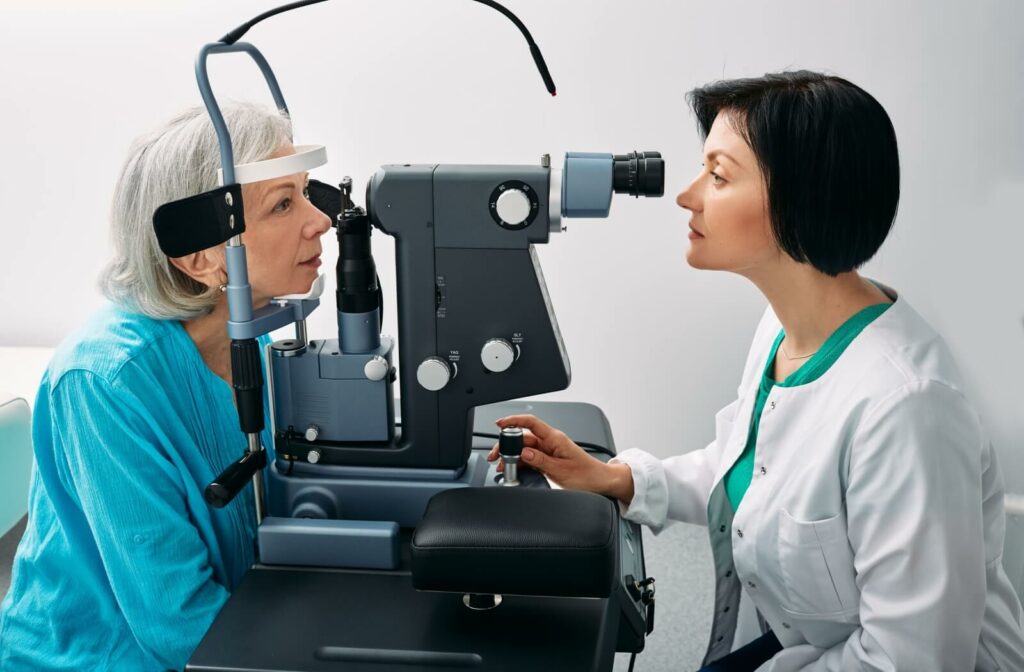Just How an Eye Doctor Can Transform Your Vision Health in Chino
Just How an Eye Doctor Can Transform Your Vision Health in Chino
Blog Article
Discovering the current Technological Developments in Optometry and What They Mean for Eye Doctors
In the ever-evolving area of optometry, recent technical developments are improving exactly how practitioners come close to eye care. From the accuracy of Optical Coherence Tomography to the nuanced understandings offered by AI-driven analysis tools, these technologies are setting brand-new requirements in patient evaluation and treatment. Teleoptometry is poised to redefine accessibility, making certain that experience goes beyond geographical constraints. As these improvements penetrate the method, optometrists are faced with the challenge of accepting these devices to enhance individual outcomes. The concern continues to be: how will these technical shifts redefine the functions and duties within the occupation?
Developments in Diagnostic Devices
Progressing the area of optometry, developments in diagnostic tools have actually revolutionized the method eye care specialists analyze and identify ocular conditions and visual impairments. The past decade has seen significant technological improvements, enabling more detailed and precise assessments. Optical Comprehensibility Tomography (OCT), for instance, offers high-resolution cross-sectional pictures of the retina, permitting the early discovery of illness such as glaucoma and age-related macular deterioration. This non-invasive imaging technique has come to be vital in modern optometric technique.
Another secret innovation is the introduction of innovative corneal topography systems, which map the surface curvature of the cornea with accuracy. These devices are especially advantageous for suitable contact lenses and identifying corneal problems. Furthermore, digital retinal imaging has actually changed conventional ophthalmoscopy, using detailed, panoramic sights of the retina that promote comprehensive visual exams.
The growth of wavefront aberrometry has actually additionally been essential, allowing the evaluation of refractive errors with unparalleled precision (Opticore Optometry). This technology aids in personalizing restorative lenses and boosting surgical end results for refractive surgeries. Jointly, these diagnostic developments equip eye doctors to provide exceptional individual care, making sure early intervention and customized treatment methods, eventually improving visual health and wellness results
AI in Individual Administration
Building on the foundation of cutting-edge diagnostic devices, the consolidation of expert system (AI) in client management stands for a transformative jump for optometry. AI systems are progressively employed to boost performance, accuracy, and personalization in person treatment. By evaluating vast quantities of data, AI can identify patterns and anticipate potential eye problems, enabling eye doctors to customize interventions extra effectively. This capacity is vital in handling chronic eye conditions such as glaucoma and diabetic retinopathy, where very early detection and continuous surveillance are crucial.
In addition, AI-driven platforms facilitate streamlined patient interactions and management procedures. Automated scheduling, online consultations, and customized follow-up strategies not only enhance person fulfillment yet also enhance time monitoring for specialists. These systems can triage individuals based upon the urgency of their conditions, making sure that those in critical requirement get punctual attention.
Additionally, AI improves decision-making by supplying eye doctors with evidence-based referrals and treatment pathways. By integrating data from electronic wellness documents, AI devices offer insights that inform medical choices, lowering the risk of errors and enhancing client end results. As AI continues to evolve, its role in client management will likely broaden, reshaping the landscape of optometric care.
Advancements in Retinal Imaging
In the world of optometry, retinal imaging has observed wikipedia reference impressive technical developments that are enhancing analysis capabilities and patient treatment. Developments such as Optical Coherence Tomography (OCT) and fundus digital photography have revolutionized just how optometrists visualize and examine the retina.
Enhanced imaging techniques like OCT angiography are more refining diagnostic precision. Optometrist Chino. Such improvements facilitate the identification of minute retinal adjustments that could represent condition development.
Additionally, innovations in expert system are increasing retinal imaging by enabling automated analysis of big datasets. These systems aid eye doctors in identifying patterns indicative of pathology, consequently boosting analysis precision and performance. Collectively, these developments are transforming retinal imaging into a foundation of modern-day eye treatment, boosting end results and expanding restorative opportunities.
Teleoptometry's Expanding Duty
Teleoptometry is significantly coming to be a vital component of eye treatment, driven by innovations in data and analysis devices. As optometry accepts electronic improvement, teleoptometry facilitates remote examinations, enabling optometrists to prolong their services beyond conventional limits. This is specifically helpful in country and underserved locations where accessibility to specialized eye care is frequently restricted. By leveraging high-resolution video conferencing and progressed retinal imaging, eye doctors can carry out extensive eye exams from afar, ensuring prompt diagnosis and treatment.
The integration of expert system (AI) further boosts teleoptometry, allowing the evaluation of visual information and helping in the discovery of ocular problems such as glaucoma and diabetic retinopathy. AI-powered formulas can rapidly analyze complicated imaging information, offering eye doctors with important understandings that reinforce clinical decision-making.
In addition, teleoptometry supports connection of care via smooth integration with digital health documents (EHRs), permitting optometrists to keep comprehensive client backgrounds. When seeking advice from with various practitioners., this makes sure that people receive personalized and constant care also.
Regardless of these advantages, challenges stay, consisting of making certain data safety and security and handling person assumptions. Teleoptometry stands for a substantial stride in the direction of even more accessible, efficient, and patient-centered eye care. As technology progresses, its function is positioned to broaden better.

Future Fads in Eye Treatment
A myriad of cutting-edge patterns is readied to improve the future of eye care, driven by technical innovations and the advancing demands of individuals. her explanation One considerable pattern is the integration of expert system (AI) in diagnostics, which promises to improve the accuracy and performance of eye exams. AI formulas can evaluate vast quantities of information from retinal pictures, possibly identifying problems like diabetic retinopathy and glaucoma earlier than traditional methods.
Moreover, customized medication is getting traction in optometry, with hereditary testing informing tailored treatment strategies. This technique aims to maximize client outcomes by customizing interventions to specific genetic accounts. Wearable technology, such as clever get in touch with lenses, is additionally on the perspective, offering real-time surveillance of intraocular pressure or sugar levels, therefore providing continual insights right into eye and systemic health.
The adoption of increased truth (AR) and virtual truth (VIRTUAL REALITY) in training and client education and learning is one more arising trend. These innovations offer immersive experiences that can improve understanding and abilities both for individuals and eye doctors. As these trends progress, eye doctors should click here to find out more remain abreast of technical improvements to give sophisticated care, making sure better patient results and satisfaction in the dynamic landscape of eye care.
Verdict

Collectively, these diagnostic improvements encourage eye doctors to provide exceptional client treatment, ensuring early treatment and tailored therapy methods, eventually improving aesthetic health and wellness outcomes.

As these innovations proceed to develop, eye doctors have to adapt and integrate them right into method, inevitably optimizing process efficiency and elevating the requirement of eye care provided to people.
Report this page